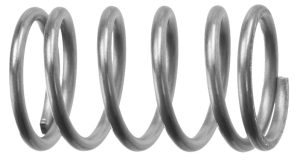
If you’re planning to buy a compression spring, you’ll need to choose the right type. Like all springs, compression springs are devices that store mechanical energy. Only compression springs, however, are designed to operate under a compressive load. When exposed to a compressive load, they become shorter while subsequently storing mechanical energy.
Material
You should consider the material when choosing a compression spring. Most compression springs, as well as extension springs, are made of stainless steel. But there are different types of stainless steel used in their construction, such as ASTM-A313 and AMS-5688. They are both types of stainless spring steel, but ASTM-A313 and AMS-5688 have different characteristics.
Spring Rate
The spring rate represents the force exerted by a compression spring when compressed. Some compression springs have a spring rate of 0.42 pounds per inch, whereas others have a spring rate of over 90 pounds per inch. The higher the spring rate, the greater the exerted force. A spring rate of 0.42 pounds per inch means that the compression spring will exert 0.42 pounds of force for every 1 inch that it’s compressed.
Free Length
Don’t forget to check the free length when choosing a compression spring. The free length is the total length of a compression spring when no force is applied to it. A free length of 2 inches means the compression spring is 2 inches long when no force is applied to it. When exposed to a compressive load, though, the spring will become shorter. You can determine the length of a compression load without a load by checking the free length.
Inside and Outside Diameter
In addition to the free length, you should check the inside and outside diameter when choosing a compression spring. Compression springs consist of metal coils. The inside and outside diameter represents the diameter of these coils. More specifically, the inside diameter is the diameter of a compression spring’s coils from the inner side of one point to the inner side of the opposite point. The outside diameter is the diameter of the coils from the outer side of one point to the outer side of the opposite point.
End Configuration
Compression springs are available in different end configurations. As the name suggests, the end configuration refers to the way in which the ends of a compression spring are constructed or configured. Common end configurations include closed and squared, closed and ground, and open.
